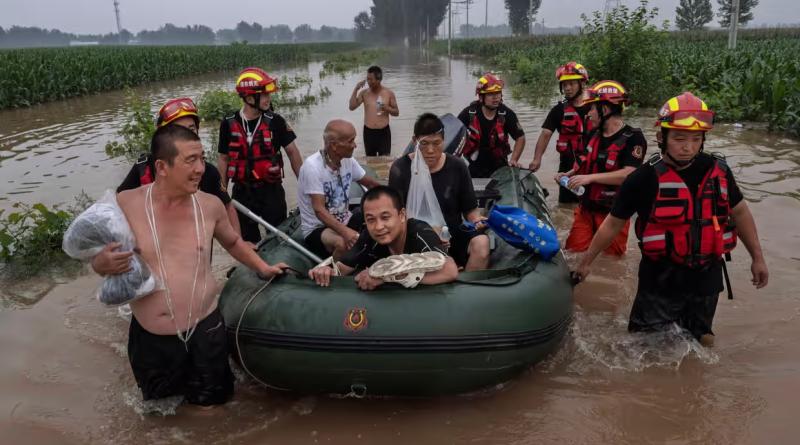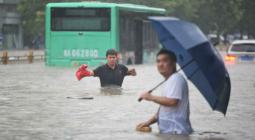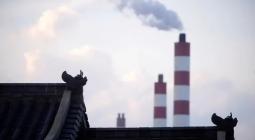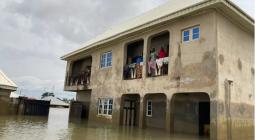Anger in China over plan to use cities as ‘moat’ to save Beijing from floods

Communist party secretary for Hebei made comments after visiting flood-hit areas earlier this week
Chinese social media users have reacted angrily to comments from a local Communist party official suggesting that the city of Zhuozhou and other flood-hit areas near Beijing should be used as a “moat for the capital”.
Ni Yuefeng, the Communist party secretary for Hebei, a province that borders the capital on three sides, made the comments after visiting flooded areas earlier this week. Typhoon Doksuri has ripped through north-east China, destroying homes and forcing hundreds of thousands of people to evacuate.
One of the worst-hit cities is Zhuozhou, home to more than 600,000 people, which experienced more than a year’s worth of rainfall in a week. More than 134,000 Zhuozhou residents have been affected by the flooding, which has washed away cars and buses, destroyed bridges and knocked out power supplies as the torrential rain turned roads into rivers across the region.
In comments published on Zhuozhou’s official WeChat channel, Ni vowed to use flood storage and detention areas to reduce the pressure on Beijing and “resolutely serve as a moat for the capital”. The article has since been deleted, and discussion of the topic appears to be censored on Weibo. A related hashtag had more than 80m views by Thursday, according to Bloomberg.
Flood detention basins are facilities that are designed to store flood waters and release them gradually, reducing the damage wreaked by huge downpours.
Some social media users continued to make coded references to Ni’s comments. “Hebei is just being used by Beijing,” wrote one. “The secretary’s words are … really shameless,” wrote another.
Many online comments about Zhuozhou were deleted by China’s censors. “Although human life is priceless, some human lives are more priceless than others,” wrote one user on Zhihu, a Reddit-like social media platform, on a discussion thread about Zhuozhou. The comment was one of many recorded by FreeZhihu, a website that tracks deleted content. Another now-deleted comment reads: “This is the helplessness of a small place … The whole world is paying attention to what’s going on in Beijing.”
On Thursday, Hu Xijin, the former editor-in-chief of the state tabloid the Global Times, wrote on Weibo that the description of Beijing’s surrounding areas as a moat “mostly refers to politics and security, meaning that the social stability around Beijing is conducive to the social governance of the capital”. He called on people to assume the “good intentions” of party cadres.
Across Hebei, more than 1.2 million people have been relocated, including more than 850,000 from flood storage areas. China’s flood control network prioritises the capital and big cities such as neighbouring Tianjin, meaning that flood waters are diverted to rural areas and smaller cities such as Zhuozhou.
There has also been criticism of comments made by Li Guoying, the minister of water resources, who said that relief efforts should ensure the safety of Beijing Daxing airport and Xiong’an New Area, as well people in flood detention areas. “Why only secure these two areas?” Fang Shimin, a science writer based in the US, wrote on Twitter. Xiong’an is a new metropolis being built south of Beijing, which is seen as a pet project of Xi Jinping, China’s leader, to build a new economic hub in the region.
China’s central government said 44m yuan (£4.8m) had been allocated for disaster relief in Beijing, Hebei and Tianjin.
Beijing has also suffered its worst rainfall since record began 140 years ago. The city recorded 744.8mm (29.3in) of rain between Saturday and Wednesday, according to the Beijing Meteorological Bureau, and at least 21 people have died. Thousands of people were being moved from their homes in Beijing and the surrounding areas on Friday as more life-threatening deluges were expected from swelling rivers and overwhelmed drainage systems.
The capital is particularly vulnerable to floods because its rapid urban development has resulted in a concrete sprawl of buildings and roads and dwindling green space, which limits the ability of the city to drain water effectively.
Additional research by Tzu-Wei Liu
cover photo: People are taken to safety by rescuers in an area inundated with flood waters near Zhuozhou. Photograph: Kevin Frayer/Getty Images





